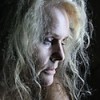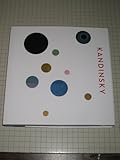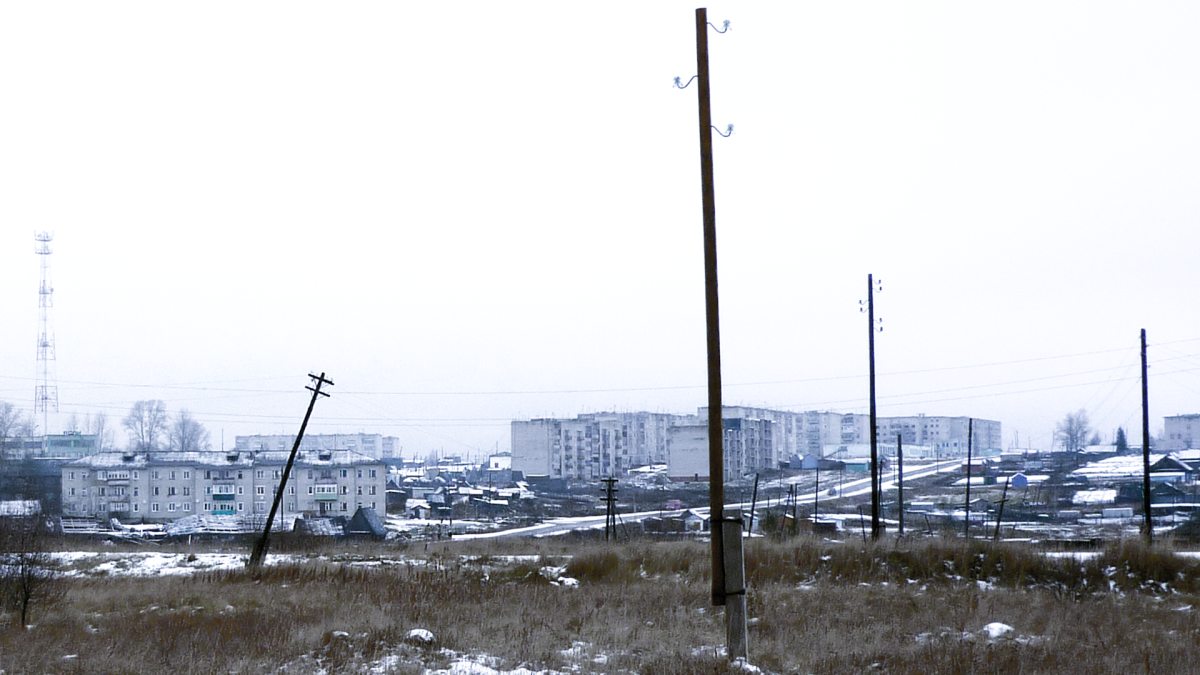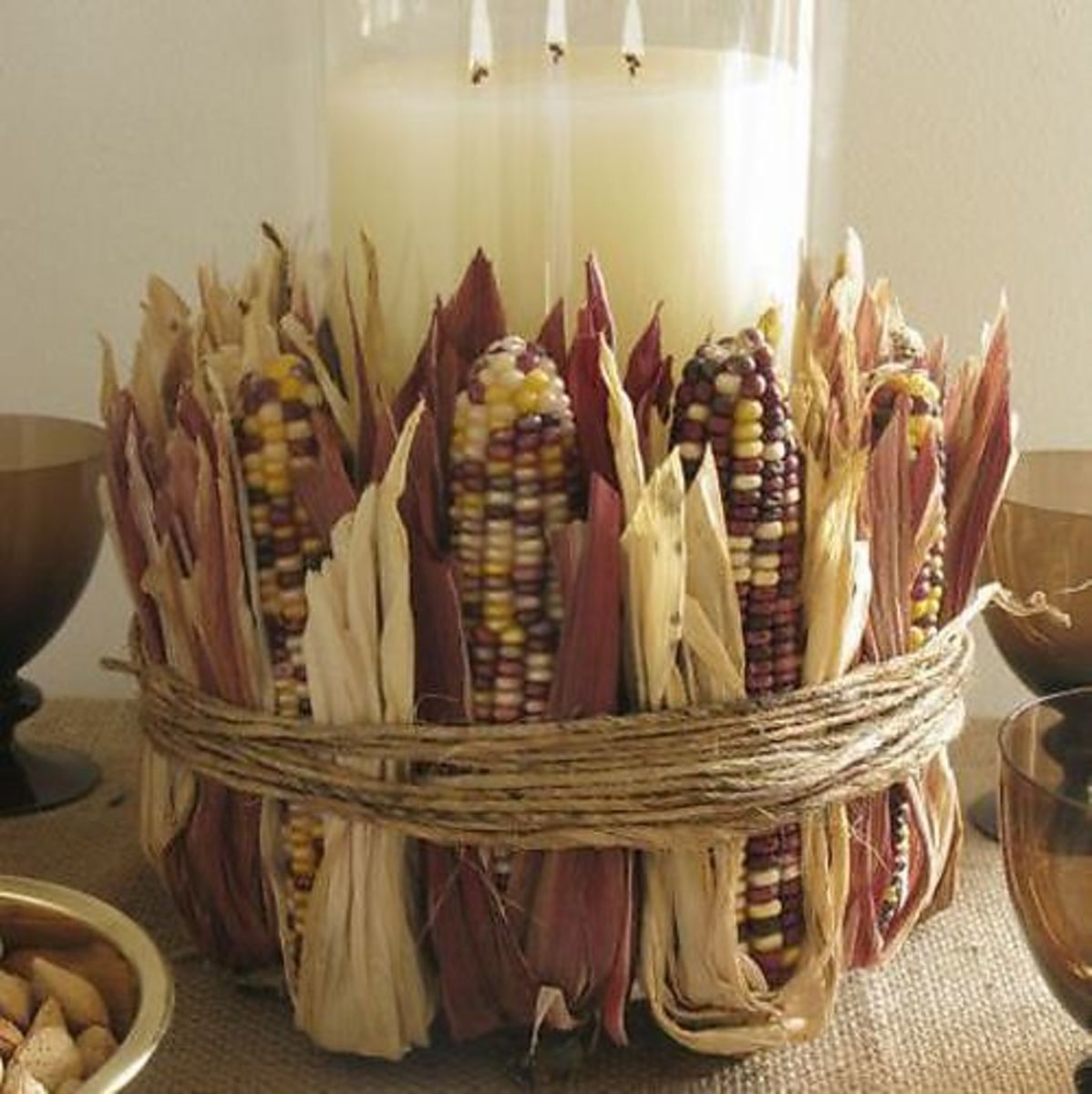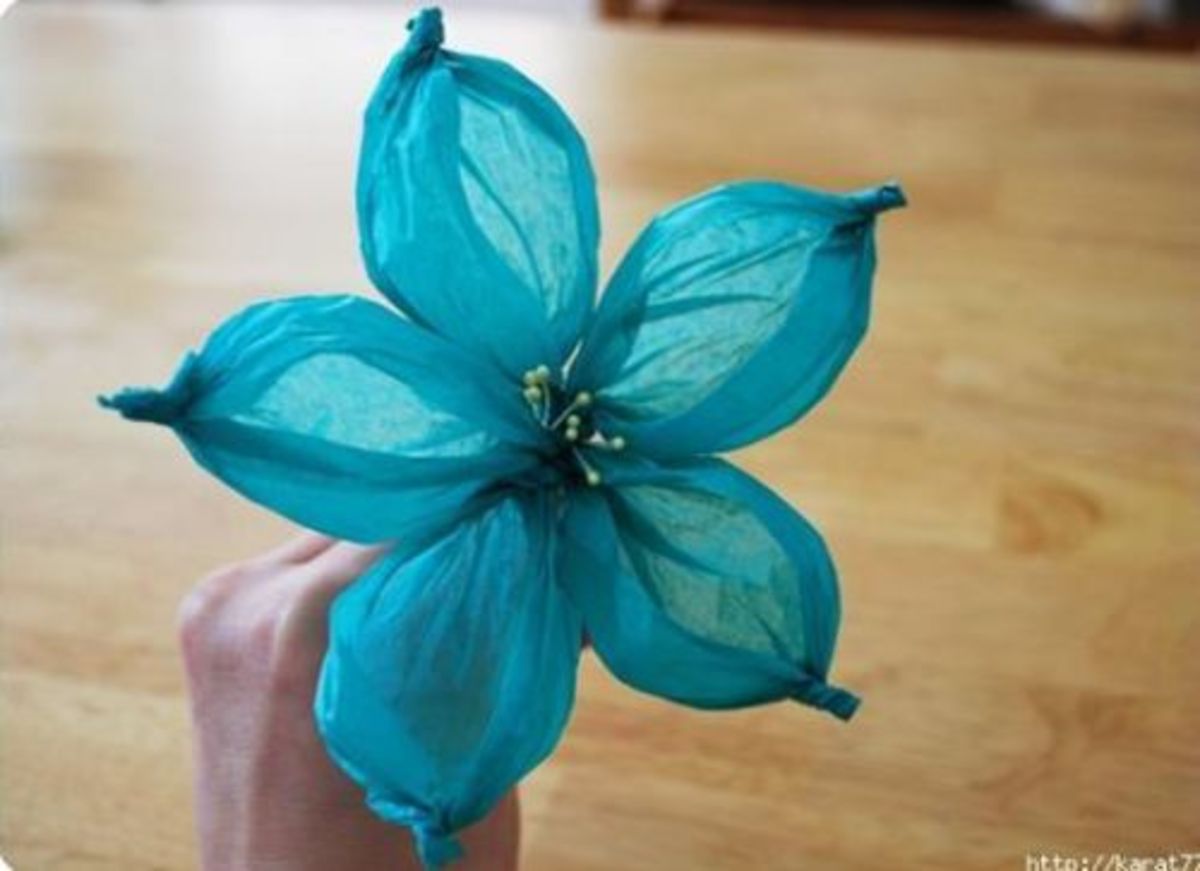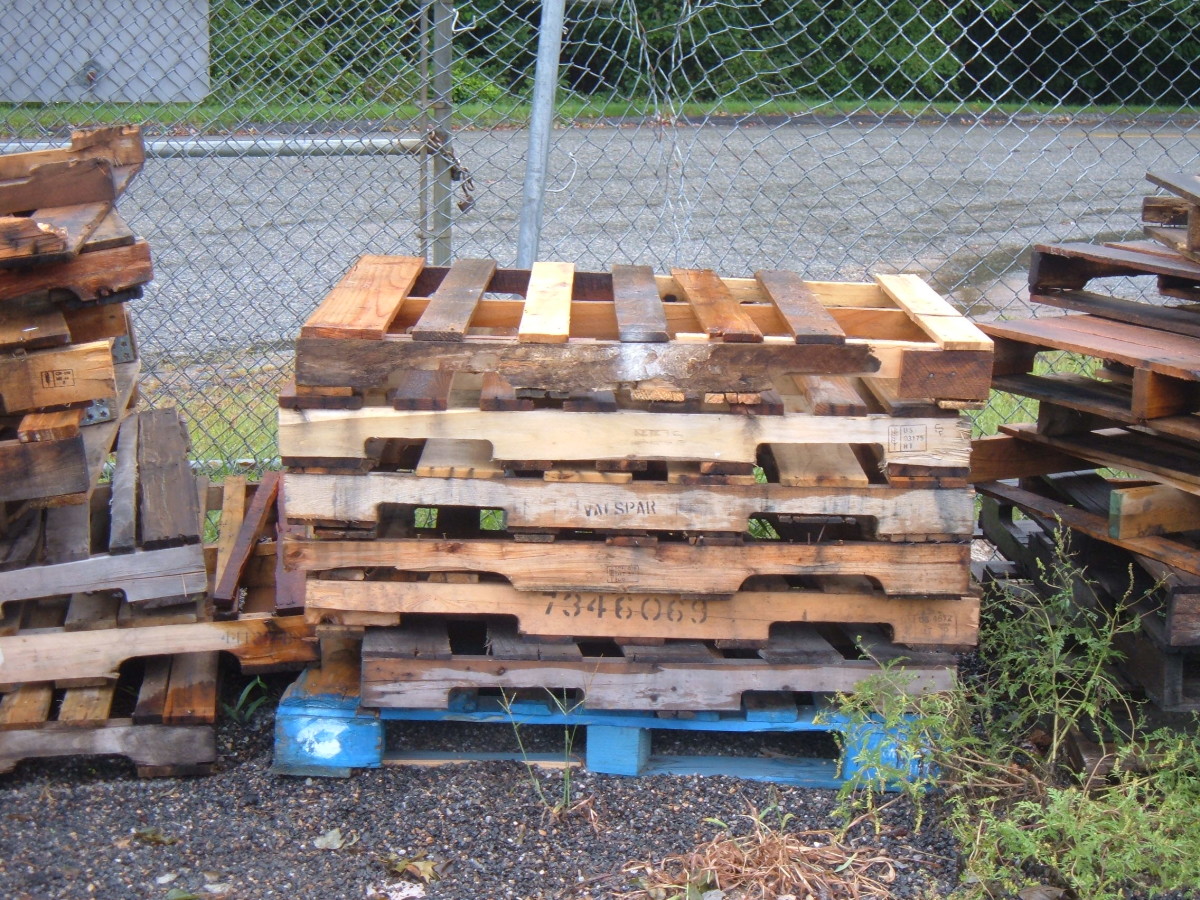Wassily Kandinsky & Tips on Understanding Color & Passion in Art

Wassily Kandinsky and Me|Goddess Art| Beautiful Women Artwork|Tips on Understanding Color in Art|Passion in Art
Abstract art, goddess art, beautiful women on canvas or a painting from the soul distorted to bring forth an image within the mind. Whenever you feel affected by the work of another artist, find out more about them! I paint goddess art and beautiful women art, works filled with passion and dreams I find within a fairies realm laced with tiny angels. Yet I try to look outside myself to find what others have to tell me, that might bring me closer to who I really am within the framework of artistic endeavors and the magical brush strokes I seek. We are fortunate in this life to come across the paths of brilliant artists who express emotions that we find our own selves relating to, one way or another. Kandinsky is one of those artists for me.
For most of my life I did not understand nor appreciate abstract art at all... until I started painting it! lol! I paint only hints of it, still reaching for that endless goal of hearing figurative goddesses sing and breathe.
Knowing more about artists who have seemingly found their expressions met I see there is so much more to discover, so I invite those tiny angels to help me light the pathway and bring me to a the sense of color Kandinsky wrote about.
I switch back and forth between freedom of thinking in art, no rules except that I spread my emotions across the canvas and finding only rules that strip my being from ever feeling fulfilled. It is not that easy at times. I think one has to be totally honest with who they are and who they hope to be. It is digging down inside your gut.. as nasty as that sounds. When we write poetry or anything else the purpose of the act is to express what we feel about something. It is the same with painting and sculpting. I tend to cross back and forth from realism to abstract and maybe some modern thinking. Modern to me anyway as I continue my search like Kandinsky. As I take in the work of Kandinsky I look with a longing to understand his emotions and his passion. To me, that is what abstract art is all about.
THE IMAGE Giallo, Rosso, Blu by Wassily Kandinsky
The image is very characteristic of his style, when you see a Kandinsky you know it right off. That is what all artists hope to find, a style of theo own that is unique to them.
Birth name Wassily Kandinsky
Born December 16, 1866
Moscow
Died December 13, 1944
Neuilly-sur-Seine
Nationality Russian
Field Painting
Training Academy of Fine Arts, Munich
Movement Expressionism; abstract art
Famous works On White II, Der Blaue Reiter
Abstract Art vrs Realism
Which is best? Abstract or Realism?
Turn on the music!
~~*~~
TURN ON THE MUSIC...
as you enjoy this lens.
Fiona Apple music is available below too! Yay!
~~*~~
FIONA APPLE LYRICS
"Across The Universe"
[Written by John Lennon & Paul McCartney]
[Originally performed by The Beatles in the album "Let It Be"]
Words are flowing out like endless rain into a paper cup,
They slither while they pass they slip away across the universe
Pools of sorrow, waves of joy are drifting through my opened mind,
Possessing and caressing me
Jai guru de va om
Nothing's gonna change my world
Nothing's gonna change my world
Nothing's gonna change my world
Nothing's gonna change my world
Images of broken light which dance before me like a million eyes,
They call me on and on across the universe,
Thoughts meander like a restless wind inside a letter box they
Tumble blindly as they make their way
Across the universe
Jai guru deva om
Nothing's gonna change my world
Nothing's gonna change my world
Nothing's gonna change my world
Nothing's gonna change my world
Sounds of laughter, shades of earth are ringing
Through my open ears inciting and inviting me
Limitless undying love which shines around me like a
million suns and calls me on and on
Across the universe
Jai guru deva om
Nothing's gonna change my world
Nothing's gonna change my world
Nothing's gonna change my world
Nothing's gonna change my world
Jai guru deva [Repeat to fade]
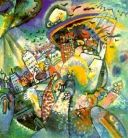
Kandinsky Quotes- Tips on Color and art
"Objects damage pictures."
"The more frightening the world becomes ... the more art becomes abstract."
"Color is the key. The eye is the hammer. The soul is the piano with its many chords. The artist is the hand that, by touching this or that key, sets the soul vibrating automatically."
"There is only one road to follow, that of analysis of the basic elements in order to arrive ultimately at an adequate graphic expression."
"Of all the arts, abstract painting is the most difficult. It demands that you know how to draw well, that you have a heightened sensitivity for composition and for colors, and that you be a true poet. This last is essential."
"All methods are sacred if they are internally necessary. All methods are sins if they are not justified by internal necessity."
"Each period of a civilization creates an art that is specific in it and which we will never see reborn. To try to revive the principles of art of past centuries can lead only to the production of stillborn works."
"The true work of art is born from the 'artist': a mysterious, enigmatic, and mystical creation. It detaches itself from him, it acquires an autonomous life, becomes a personality, an independent subject, animated with a spiritual breath, the living subject of a real existence of being."
"The artist is not a 'Sunday child' for whom everything immediately succeeds. He does not have the right to live without duty. The task that is assigned to him is painful, it is a heavy cross for him to bear."
Wassily Kandinsky
Great Kandinsky stuff from Amazon
In Search of Goddess Art
~~*~~
There are many forms of goddess, abstractly it is felt in color... it is also felt in dance.
Fiona Apple
Wassily Kandinsky - A Color Fanatic

~~*~~
The image is of Kandinsky's painting "Anticipating the Future"
~~*~~
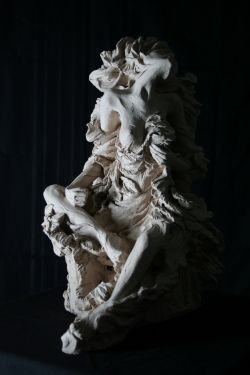
Art Helps ~ How to Move Sadness and Sorrow Aside and Fly
by Kathy Ostman-Magnusen
Twisted by the pawn
inside
leaving wrong or right
behind
everything meets pain
eventually.
Hearts moan
as we die to the old things
yet flowers grow despite ourselves.
And in that space
that grave
we find
new life.
We all wait
for something
anything
to connect us to living
and mercy
from our own
well proportioned stings.
Move the silence aside
the wind will be still
if you stop listening for it.
And yes
you can smell vacancy
in the middle of sadness
despite yourself.
Close all your doors
hide inside
go ahead
try.
Write your feelings
on scraps of paper
wipe your eyes
then toss them away.
Tears in the shadows
leading
to an unconnected soul.
Sometimes
it takes years
to build up such secrets
and dreams
from behind
our own walls.
Secrets intact
if you never speak out loud.
You can magnify your escape
from what you think is unbearable.
Still
at some point
they will follow you.
Made to last
the rhythm of a scream
take a deep breath
to meet your own
intrigue.
Its never all that far away
close your eyes
accept it
the protest
inside of you.
Ohh such gloom
and a hole in the phrases
you use.
Sounds can deliver conclusions
and become extravagant rumors
that even you
will believe about yourself
if you don't soften
your own fall.
Magic calls on all of us
and yet
depending on its delivery
some only understand regret
and then again
some decide
to hear it
from miles
away.
Measure those stars
they are right in front of you.
ABOUT Kathy Ostman-Magnusen: I am an artist, represented by Monkdogz Urban Art, New York. ORIGINAL ART may be purchased through Monkdogz: http://www.monkdogz.com/chelseagallery/artistart/M...
My newest website: http://www.kathyostman-magnusen.com
The image is of my sculpure "Bleeding Wings 5"
~~*~~
Wassily Kandinsky Created Mystical Art
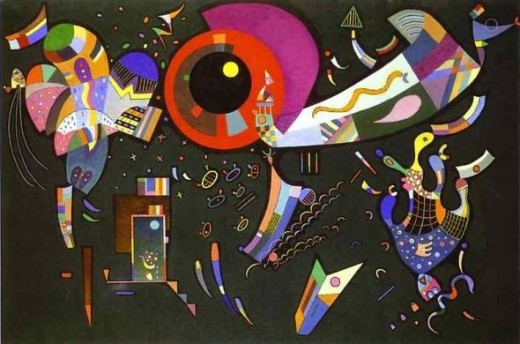
~~*~~
The image is a painting by Wassily Kandinsky, "Around the Circle"
~~*~~
The Fugue and Color in Art
The Fugue - Wassily Kandinsky
"The sound of colours is so definite that it would be hard to find anyone who would express bright yellow with base notes or dark lake with treble. Generally speaking, colour directly influences the soul. Colour is the keyboard, the eyes are the hammers, the soul is the piano with many strings. The artist is the hand that plays, touching one key or another purposively, to cause vibrations in the soul."
Kandinsky, Concerning the Spiritual in Art
"The Fugue" by Kandinsky
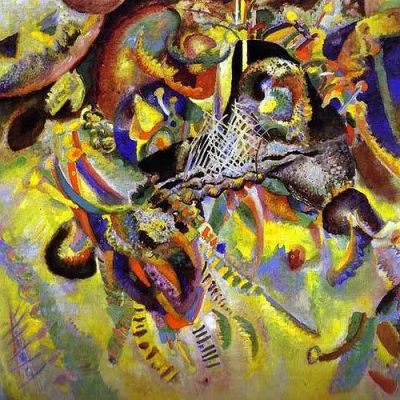
Russian Ballet: "Dance of the Snowflakes" Mariinsky Theatre
How to Be a Goddess of Art - Tip One - Engross Yourself in Quotes by Kandinsky
by Kathy Ostman-Magnusen
How do you find the goddess of art, the scorpion drawing that defies the critics, ward of the grim reaper that tells you that you are not good enough and you will never be a good artist? How do you paint something great, so that when people walk into the room and see it, they are not sure if they 'get it' , but they cannot stop looking at it. How do you bring your soul to the canvas, clay, metal sculpture, etched glass, even a scrapbook? How do you define yourself as a good abstract painter, or within the realm of realism, impressionism,modern art, portrait or figurative art?
How do you make great art?
One thing to help you reach the level you desire is to engross yourself in it. When you breathe, know that it is not possible to think of anything else, but your goal in achieving great art and bathing in the passion you know is in your being. Another is to DEFINE YOURSELF within that world you long for. Read all you can of the words of great artists who came before you or ones you admire.
Wassily Kandinsky had some enlightening things to say:
"Every artist, as creator, must learn to express what is personally characteristic."
"Every artist, as a child of his era, must express what is characteristic of this age."
"Every artist, as servant of the art, must express that which is characteristic of art generally.
-- Wassily Kandinsky in his "About the Spiritual in Art and Especially in Painting".
Breathe these words in, define yourself, seek out what you know is there for you, grab on to those grim reaper drawings, pictures of cats kittens, whimsical angels, whatever it is you love and then create!
ABOUT Kathy Ostman-Magnusen
I paint and sculpt female fantasy art and map fairy tale adventures. I dream of beautiful women on canvas and art of exotic women.
I have illustrated for Hay House Inc.,"Women Who Do Too Much" CARDS, taken from Anne Wilson Schaef's book. I also illustrated for Neil Davidson, who was considered for the Pulitzer Prize in feature writing, and several other publications. My paintings are collected worldwide.
Giclee canvas art work, greeting cards and posters are available for sale on my website:
Sign up for my mailing list for FREE ART GIFTS suitable for children: Drawings of whimsical angel pictures, legends of mermaids and fairies in art. Tiny angels whisper fantasy art for shrink art, or coloring pages. Also a "Letter From the Tooth Fairy", ya just never know when you might need one!
I am Represented by:
Monkdogz Urban Art, Inc., 547 West 27th Street, 5th floor, New York, NY 10001
ORIGINAL ART may be purchased through Monkdogz
Check out my Squidoo for more ideas on finding the goddess or wild scorpion in art that is indeed you: Fantasy Art Woman|Beautiful Women Goddess Art: http://www.squidoo.com/kathysart
Quick, what do you think of Kandinsky?
Golden Ring of Russia - Travel Guide PART ONE - by Stan Trof
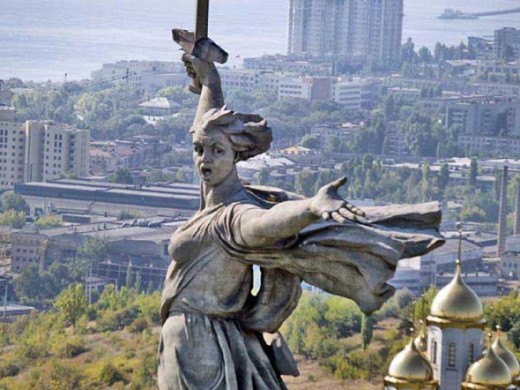
WHAT IS IT: The so called "Golden Ring of Russia" is a symbolical ring connecting historical towns and cities to the North-West of Moscow. They represent 1,000 years of rich Russian history written in stone and wood, from a 850-year old church in Rostov to a 19th-century log house in the Suzdal's open air museum. Each of the "golden" towns once played an important role in the history of Russia and was connected in one way or another with famous historical figures such as Alexander Nevsky, Ivan the Terrible, Peter the Great and many others.
WHAT TO SEE: The cities and towns of the Golden Ring are listed here in alphabetical order:
Aleksandrov (founded in 1530, population 68,000) - The town is situated 100 km from Moscow on the crossway of ancient roads from the largest historic centers of Russia - Vladimir and Suzdal, Rostov and Yaroslavl, Sergiev Posad and Pereyaslavl-Zalessky. In 1564- 1581 the town was the residence of Ivan the Terrible. The very first in Russia publishing house was established in Aleksandrov in 1576. One of the leading textile manufacturing centres in Russia in the 19th century.
Bogolubovo (founded in 990, population 4,000) - a tiny quiet town near the city of Vladimir. The town was named after the Russian prince Andrey Bogolubsky (God-loving) who built the first fortified settlement here in 1165. Tourists can see remains of the Andery Bogolubsky's residence including some residential chambers of the 12th century and the beautiful Church of the Intercession of the Virgin on the Nerl (1165) which is considered to be one of the finest specimens of old Russian architecture.
Gorohovets (founded in 1239, population 30,000) - The town was founded under Vladimir prince Andrey Bogolubsky. The town is picturesquely settled on the high bank of the Klyazma River. Played role as a fortified forepost until 1600-s. Reached its developmental pick in the 17-th century as a local centre for blacksmithing, textile-making and making of leather and also as an agricultural trade centre for grains and flax.
Gus-Khrustalny (founded in 1756, population 80,000) - Over 200 years ago a merchant built here the first workshop of glass casting. Today the town is one of the district centers of Vladimir region, well-known in Russia and abroad as the national center of glassmaking. The name Gus-Krustalny can be literally translated as Chrystalline Goose. The old part of the town is a workmen's settlement of 1900-s. with its own Church of St. Joachim of 1816.
Kholuy (founded 1650, population 1,000) - The village of Kholui did not begin producing lacquered miniatures until the 1930s, and though iconography had been an important trade in the region in previous centuries, Kholui was never bound to any particular artistic tradition. Rather, Kholui miniatures share some traits with both Palekh and Mstera art, yet maintain a distinctive lyrical quality of their own. Sometimes, as with Palekh miniatures, Kholui miniatures will include some fine gold and/or silver ornamentation within the painting, and Kholui artists can create fantastic border ornaments on par with those of Palekh.
Kostroma (founded in 1213, population 300,000) - In the past Kostroma was known as "the flax capital of the north"; it supplied Europe with the world's finest sail-cloth. The city has been also called as the "cradle of the Romanov dynasty". Mikhail Romanov, the first of the Romanov dynasty, left the Ipatievsky Monastery for Moscow in 1613 to become tsar of Russia. During the Polish intervention in the turbulent years of the early seventeenth century Kostroma was a significant stronghold for the resistance movement. Nowadays Kostroma is an important industrial center (textile, metal works), a capital city of the Kostroma province.
Mstera (founded in 1628, population 6,000) - the town takes its name from the little Msterka River, which flows through it merging with the Kliyazma. It is in Vladimir Region, but not far from the border with Ivanovo Region, south of Palekh and Kholui, in breathtakingly beautiful countryside - the one that forms the backdrop to its paintings. Mstera was a respected center of icon production until the trade was banned after the Revolution of 1917. Since then its artists has been creating world-famous masterpieces in the form of lacquered miniatures.
Murom (founded 862, population 145,000) - one of the oldest Russian cites stretched along the left bank of the Oka river. The town's name originates from "muroma", one of the Finno-Ugric tribes lived here 15 centuries ago. Every Russian knows the name Ilya Muromets. He was a mythical epic hero defending people of Russia and later became a synonym of superior physical and spiritual power and integrity, dedicated to the protection of the Homeland. The town survived three Mongol invasions. In the 17th century Murom became an important centre of various crafts - building, painting, sawing.
Palekh (founded 1600, population 6,000) - the village is situated about 400km (250 miles) from Moscow in the Ivanovo region. In the 15th century it was one of the first centers of icon drawing trade. After the 1917 communist coup, when the icon business went down, Palekh masters tried to decorate wooden toys, dishes, porcelain and glass. These days the name of Palekh is nearly synonymous with the art of Russian lacquer.
Pereslavl-Zalesskiy (founded in 1152, population 45,000) - one of the oldest Russian towns, the birthplace of the famous Russian prince Alexander Nevsky, who defeated an army of German knights in 1242. Zalessky means "behind the woods". That is where, behind the dense forests, ancient Slavic tribes retreated seeking refuge from hostile nomads coming from the South-East.
Ples (founded in 1410, population 4,000) - this quet little historical town is located on the bank of the mighty and beautiful Volga river. During the reign of Ivan the Terrible Ples was one of the largest river firsh suppliers to the kings' court. In the 18-19th centuries the town became known as a popular resort and was often called "Russian Switzerland" for the beauty of its scenery. Numerous Russian artists including the famous master of landscapes Levitan used to come here to work.
Rostov Veliky (Rostov the Great, founded in 862, population 40,000) - another pearl of ancient Russian culture. In old Russia only two towns were called veliky (great). One was Novgorod, the famous trade centre of the Russia's north, the other Rostov. In the 12th century Rostov grew to equal Kiev and Novgorod in size and importance. Modern Rostov is a sleepy old town with some magnificent buildings next to the shallow Nero lake.
Sergiev Posad (founded in 1345, population 115,000) - the spiritual center of Russia, residence of the Patriarch of the Russian Orthodox Church, where the remains of the first national saint, Sergei Radonezh, rests. In the heart of Sergiev Posad is a well-preserved splendid architectural ensemble of over 50 historical buildings, as well as magnificent art collections including old Russian painting and the treasures in the vaults of the former Trinity Monastery.
Suzdal (founded in 1024, population 12,000) - this little quiet town is a real gem, one of the most beautiful in the Golden Ring collection of citeis and towns. In the 11th century Suzdal became the very first forepost of Christianity in the North-Eastern Russia and significantly affected the religious life in Russia until the end of 19 century. Here you can find over 100 church and secular buildings dating from the mid-12th to the mid-19th century crowded into a area of 9 square km.
Uglich (founded in 937, population 38,000) - the town was built on a major trade route. In its history Uglich has survived destruction by the Mongols and lived through the devastation of fires and plagues. Uglich is famous for Russia's darkest secret - the death of young Prince Dimitri, son of Ivan the Terrible who is often called Tsarevich (an heir to the throne) Dmitry. The center of the town also is a historical and architectural landmark. The streets are wide, with various churches standing side by side along the road.
Vladimir (founded in 1108, population 400,000) - one of the oldest Russian cities, was founded by the Russian Prince Vladimir Monomakh on the banks of the Kliazma river. The city really blossomed in the 12th century during the reign of Prince Andrey Bogolubsky, who strengthened its defences, welcomed architects, icon-painters, jewellers from other countries, built new palaces and churches so magnificent that travelers compaired them with the ones in the "mother of all Russian cities"- Kiev. Until the middle of 14th century the city had been an administrative, cultural and religious center for North-Eastern Russia.
Yaroslavl (founded in 1010, population 600,000 ) - as the legend goes it was founded by the famous Russian prince Yaroslav the Wise as a fortified settlement on the Volga river. After a huge fire of 1658 that turned most of the city into ruins, Jaroslavl was rebuilt in stone and reached the peak of its architectural development with palaces and churches richly decorated with beautiful frescoes and ornaments thus earning the title "Florence of Russia". Today it is a quiet metropolitan city, one of Russia's largest regional centres, a capital of the Jaroslav province and one of the most beautiful cities of old Russia.
Yuriev-Polsky (founded in 1152, population 20,000) - was founded by the Prince Yury Dolgoruky (who also founded Moscow in 1147) and named after himself. The second word "Polsky" means "among the fields" as it is situated in the heart of fertile and flat Suzdal land. These beautiful landscapes inspired the great painters and writers such as Repin, Tyutchev, Odoevsky, Soloukhin. Local textile centre since the 18th century.
HOW TO GET THERE: By plane to Moscow.... This article is continued below
Golden Ring of Russia - Travel Guide PART TWO - By Stan Trof

Article continued from above~
TRAVEL TIPS: A passport and a Russian visa are required to travel in or transit through Russia. To learn more about how to obtain Russian visa please visit Russian Embassy website. Without a visa, travelers cannot register at hotels and may be required to leave the country immediately via the route by which they entered, at the cost of the traveler. Russian customs officers strictly follow document regulations so travelers are advised to have all papers in order. It is also recommended that additional copies of passport and visa be kept in a safe place in case of loss or theft. Elderly travelers and those with existing health problems may be at risk due to inadequate medical facilities. Doctors and hospitals often expect immediate cash/dollar payment for health services at Western rates so supplemental medical insurance with specific overseas coverage is very useful. Travelers should be certain that all immunizations are up-to-date, especially for diphtheria and typhoid. Quality of tap water varies from city to city but normally is quite poor. Only boiled or bottled water should be drunk throughout Russia. Crime against foreigners in Russia continues to be a problem, especially in major cities. Pick pocketing, assaults, and robberies occur. Foreigners who have been drinking alcohol are especially vulnerable to assault and robbery in or around night clubs or bars, or on their way home. Robberies may occur in taxis shared with strangers. Be aware that public washrooms are difficult to find, and usually you have to pay there. To use a public phone you will need a token or local card. International calls can not be made from street phones. Your mobile phone will work in Moscow and Saint Petersburg but seldom in regional cities. Taxi fee must be discussed with a driver before a journey.
In the major cities you can rent a car if you do not mind fairly rugged road conditions, a few hassles finding petrol, getting lost now and then and paying high rent price. Public transport in Russia is quite good, cheap and easy to use though sometimes overcrowded. Restaurants seldom have a menu in English. Tipping is expected but not mandatory. Signs in English are common on the streets of Moscow and other big cities. In large cities it is not hard to find a passerby who can answer your questions in Engish. Electricity throughout Russia is 220 volt/50 hz. The plug is the two-pin thin European standard.
We wish you a safe and nice trip!
For more travel guides, other travel data, online trip reservations visit us: http://www.travelmake.com - one of leading discount travel agencies, a source of useful travel information.
Wassily Kandinsky Link List and Me
- Kathy's Art • Fantasy Art Woman | Beautiful Women Goddess Art
Fantasy art of exotic women by Kathy Ostman-Magnusen. Beautiful women goddess art and fantasy art woman original paintings, giclees, posters and greeting cards. - Monkdogz Urban Art Gallery - 547 West 27 Street New York City
I am represented in New York by Monkdogz - Welcome to barebrush.com
With barebrush.com, I am trying to widen public awareness of, access to and appreciation for the art of the n*de. I want to help artists to find dealers, help dealers to find collectors, help collectors to find enjoyment, and help us all to find each - WebMuseum: Kandinsky, Wassily
Short biography and sample works of the Russian-born artist, one of the first creators of pure abstraction in modern painting. - Wassily Kandinsky Online
Wassily Kandinsky [Russian-born French Expressionist Painter, 1866-1944] Guide to pictures of works by Wassily Kandinsky in art museum sites and image ... - Kandisky
Wassily Kandinsky (1866 - 1944) ... Born in Moscow, December 4, 1866, Kandinsky studied at the Academy of Fine Arts in Munich, Germany, from 1896 to 1900. ... - The life of Wassily Kandinsky
Born in Moscow in 1866, Kandinsky spent his early childhood in Odessa. His parents played the piano and the zither and Kandinsky himself learned the piano ... - Kandinsky: Compositions
Wassily Kandinsky was one of the most original and influential artists of the twentieth-century. His "inner necessity" to express his emotional perceptions ... - Wassily Kandinsky Prints and Posters at Art.com
Wassily Kandinsky Prints and Posters. Find Wassily Kandinsky Prints and Posters at Art.com. - Guggenheim Collection - Artist - Kandinsky - Biography
Vasily Kandinsky was born on December 4, 1866, in Moscow. From 1886 through 1892 he studied law and economics at the University of Moscow, where he lectured ...
Kandinsky_First_Abstract_Watercolour_1910
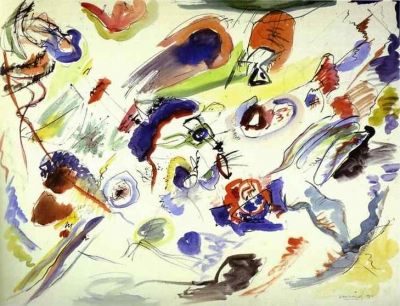
Wassily Kandinsky
Wassily Kandinsky was also very prolific author!!
Share your stories, sightings, thoughts, rants, raves...
